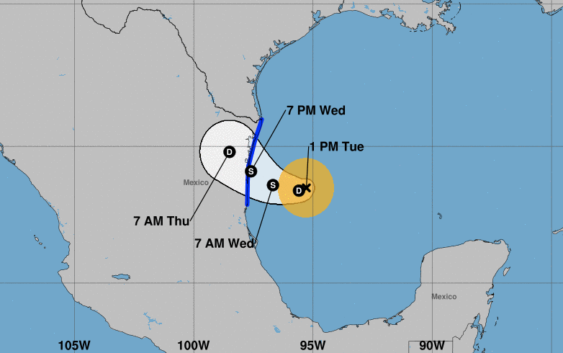- WATCH: Video Shows Confirmed Tornado touches down in Columbus County
- Residents begin clean up after storms, apparent tornado roll through NC Tuesday
- Flooding lingers in Liberty County neighborhoods near Trinity River with more rainfall expected
- North Carolina behind on hurricane preparedness, study shows
- North Carolina way behind on hurricane preparedness, study shows
A Tropical Storm Emerges in the Gulf While Dorian Scrapes Florida

Remember back in mid-August when all was quiet in the Atlantic and we were all wondering what the big deal was with these so-called hurricanes? Who were these “forecasters” kidding? Well, um, our apologies because when they suggested things were about to heat up, the weren’t kidding.
There are currently four areas of interest for the National Hurricane Center, two of which are named storms. And if you really want to freak out, one forecast model is showing a major hurricane slamming into Long Island around September 17. But, that’s a long range forecast, so we won’t be holding our breath.
Hurricane Dorian has been downgraded to a category two storm that has been beating the holy hell out of Grand Bahama Island for two days. The devastation there will be difficult to calculate as the videos that have emerged are as terrifying as they are awe inspiring.
Dorian has finally begun to creep to the northwest and is forecast to hug the Florida coastline. Even though it has weakened thanks to interaction with the island and cool water upwelling, it could intensify some as it moves northwest, then north and ultimately northeast. And as the storm’s intensity has contracted, its wind field has expanded making how close it gets to the coastlines of Florida, Georgia and the Carolinas all the more critical.
Closer to home, we have our second named storm in the Gulf this year. Tropical Storm Ferdinand has gone from a remnant low pressure system to a storm in pretty short order. Fortunately, it will be onshore before it has much time to grow any larger. With high pressure exerting itself over our area (goodbye tropical weather, hello 100-degree days!), it will keep Ferdinand well to our south where it will likely make landfall in northern Mexico.
With a week left until the statistical peak of hurricane season and a little less than a month of concern for us along the Texas coast, there is still good reason to pay close attention to the tropics. It ain’t over yet.